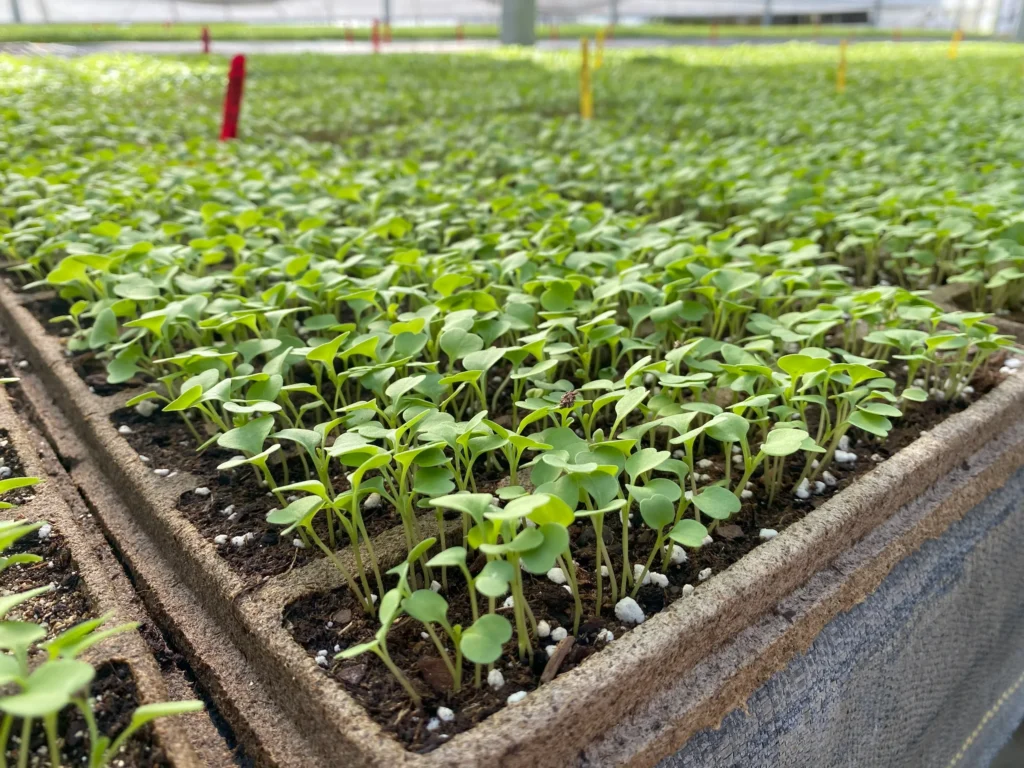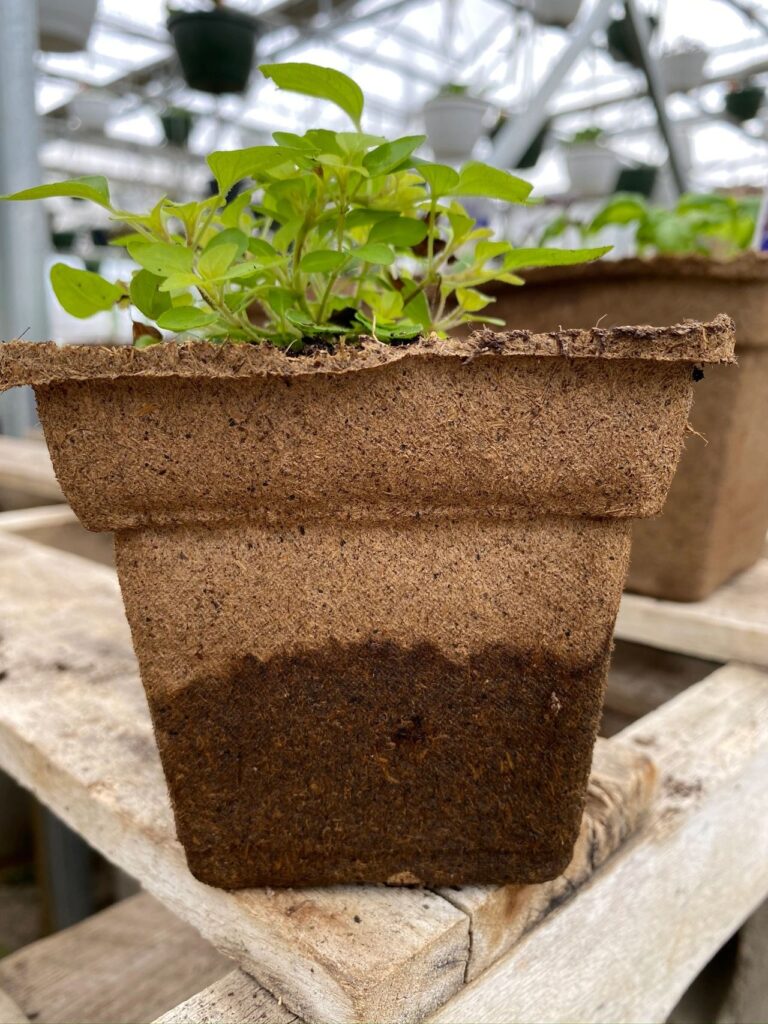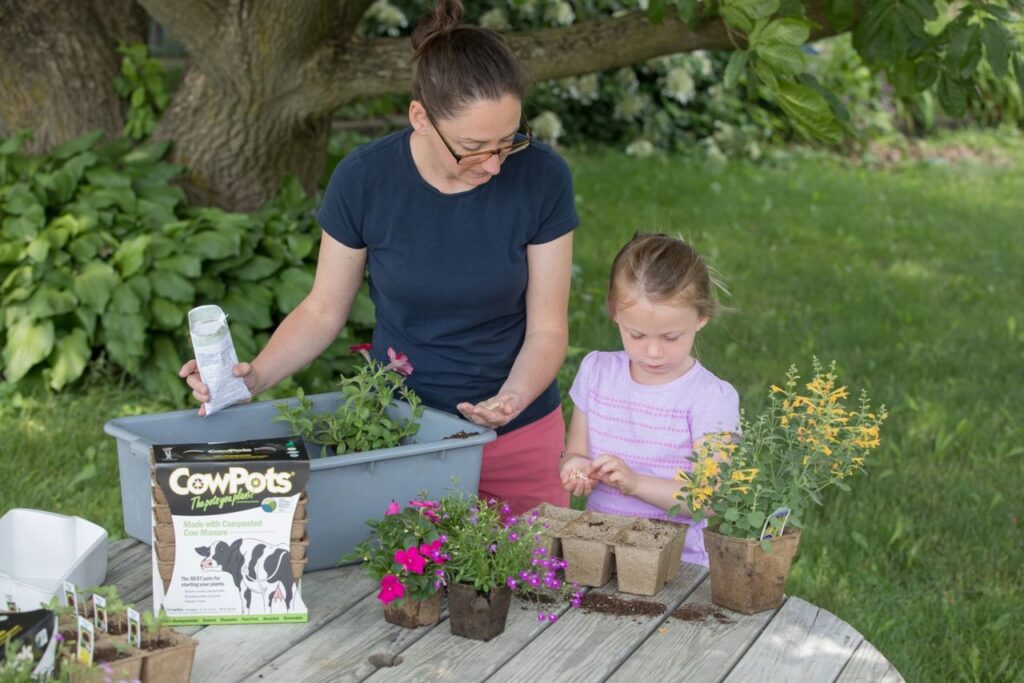Tips for Using Biodegradable CowPots – the ultimate seed starter pots

Starting seeds for your garden is an exciting and essential step in the journey of growing your own plants. However, traditional seed starting supplies include plastic pots which can contribute to environmental waste and may not always be the best choice for your plants or the planet. That’s where biodegradable alternatives like CowPots come in. Not only are CowPots better for the environment, but they also offer unique benefits for your plants. In this blog, we’ll explore tips and tricks for seed starting using CowPots and identifying sustainable gardening practices that benefit both your garden and the planet.
Choose the Right Size CowPots:
- CowPots come in various sizes ranging from 3″ to 17″ to accommodate different types of seeds, seedlings, bulbs, tubers and even young trees. Choose pots that provide enough space for your seeds to germinate and grow without becoming overcrowded. Visit Pot Specifications for a complete list of product dimensions and volumes.
- Larger CowPots are ideal for transplanting seedlings that require more root space, such as tomatoes, peppers, and eggplants, while smaller pots are well suited for herbs, flowers, and vegetable varieties that don’t need to stay indoors as long. The #3 six cell is our preferred style for cold season crops like lettuce, spinach, microgreens as well as cucurbits because they can be moved out to the field within a few weeks after germination.
- You can start your seedlings in a smaller CowPot, then transplant the entire pot with plant into a larger CowPot style without removing the pot or disturbing the roots. For step by step instructions, visit Seed Starting.
Prepare the CowPots for Planting:
- Before planting your seeds, make sure you are using sterile potting soil that is pre-moistened. This will provide a conducive environment for seed germination.
.jpg/:/cr=t:0%25,l:0%25,w:100%25,h:100%25/rs=w:1280)
Plant Seeds According to Instructions:
- Follow the planting instructions provided on the seed packets for optimal germination and growth. Different varieties of seeds have different needs for germination.
- Make small indentations or holes in the potting mix of each CowPot and place the seeds at the recommended depth. Gently cover the seeds with soil and lightly press down to ensure good seed-to-soil contact.
Provide Adequate Water and Light:
- Water the CowPots regularly to keep the soil moist but not waterlogged. Avoid overwatering, as this can lead to root rot and other issues like fungus and mold. If the CowPots appears light in color and it feels dry, that’s a good sign that it’s time to water. If the CowPot is dark brown and feels damp to the touch, you can hold off on watering.
- Place the CowPots in a sunny location or under grow lights to provide adequate light after you have seed germination to stimulate healthy plant growth.

Monitor Seedlings’ Progress:
- Keep an eye on your seedlings as they grow, checking for signs of growth, such as sprouting leaves and roots.
- Thin out seedlings if necessary to prevent overcrowding and promote stronger, healthier plants.
Transplant Seedlings into the Garden:
- Once your seedlings have developed strong roots and several sets of true leaves, they are ready to be transplanted into the garden or into a step up container.
- CowPots make transplanting easy and eco-friendly. Simply plant the entire CowPot into the soil, as the pot will naturally decompose over time, reducing root shock and giving the plants extra security when they get used to their new environment!
Reap the Benefits of CowPots:
- CowPots offer numerous benefits for both your plants and the environment. Unlike traditional plastic pots, CowPots are biodegradable and break down naturally in the soil, reducing waste and minimizing environmental impact.
- Additionally, CowPots are made from composted cow manure, which provides an ideal environment for growing a healthy root system. The pots decompose in the soil with the help of the microorganisms in your garden as they are attracted to the nutrients available in the CowPot. The bioactivity at the planting site promotes healthy root development and vigorous plant growth.

Practice Sustainable Gardening:
- Using CowPots is just one way to incorporate sustainable practices into your gardening routine. Consider composting organic waste, using natural pest control methods, and conserving and recycling water to minimize your environmental footprint.
- Think of other items that can be recycled for using in your garden – popsicle sticks for making homemade plant tags, clamshell food containers that help maintain a moist environment for early germination, flattened cardboard boxes to suppress weeds and create walkways through your garden.
- By making conscious choices in your garden, you can support biodiversity, conserve resources, and create a healthier ecosystem for plants, animals, and people alike.
Seed starting with biodegradable CowPots is a sustainable and environmentally friendly option that benefits both your plants and the planet. By following these tips and incorporating sustainable gardening practices into your routine, you can enjoy a bountiful garden while minimizing your environmental impact. Let’s work together to create a greener, healthier world, one seed at a time. And one pot at a time!



